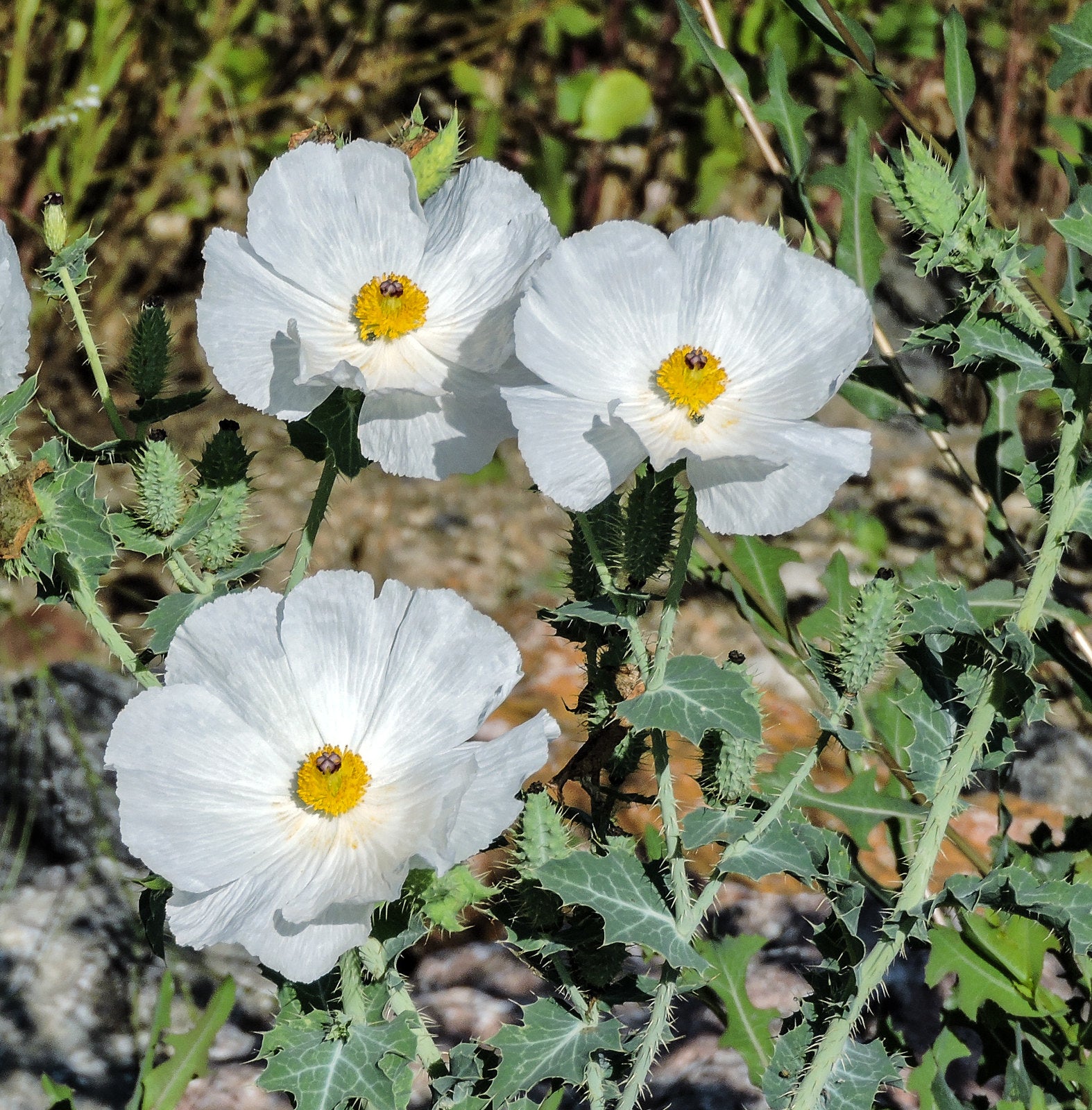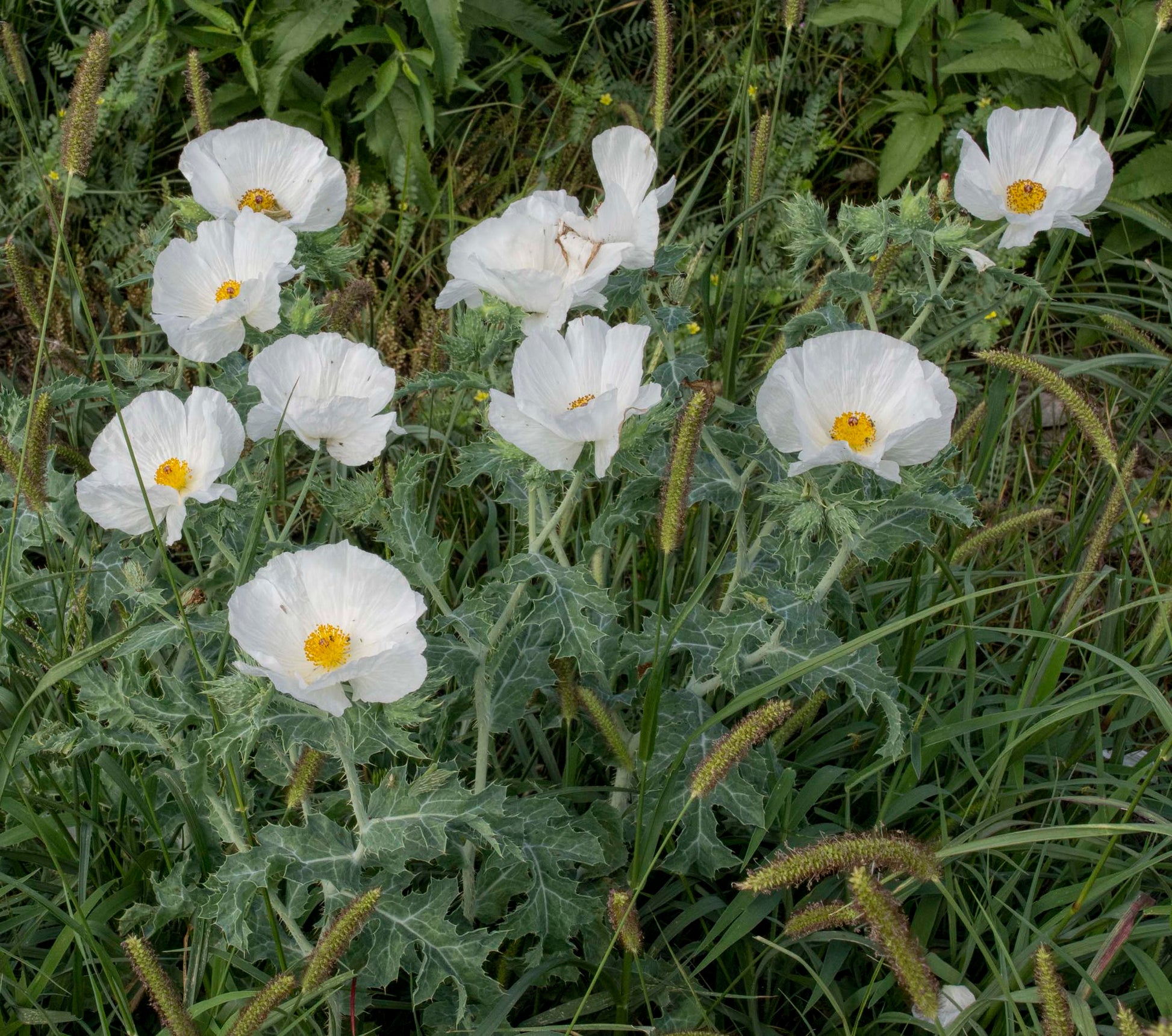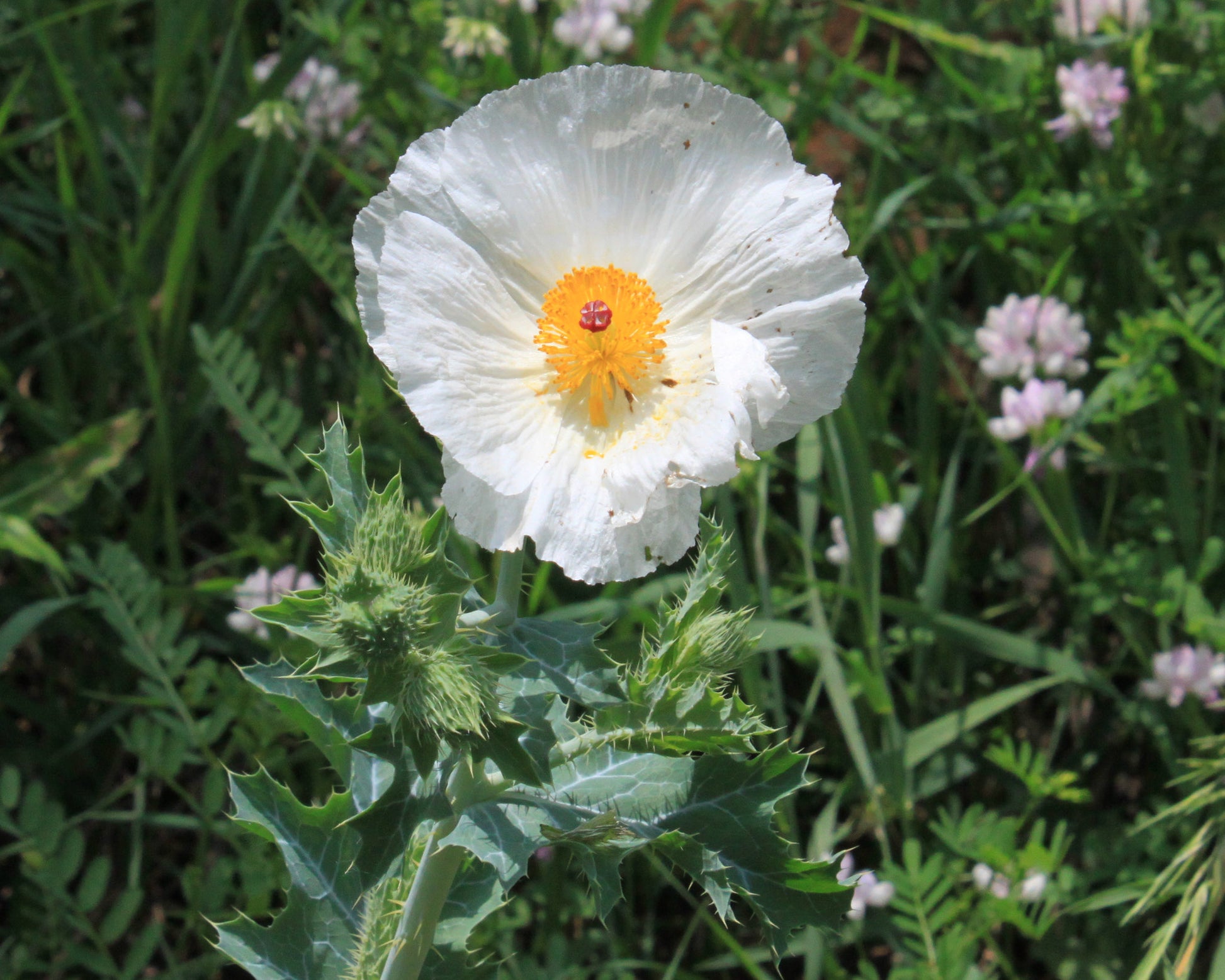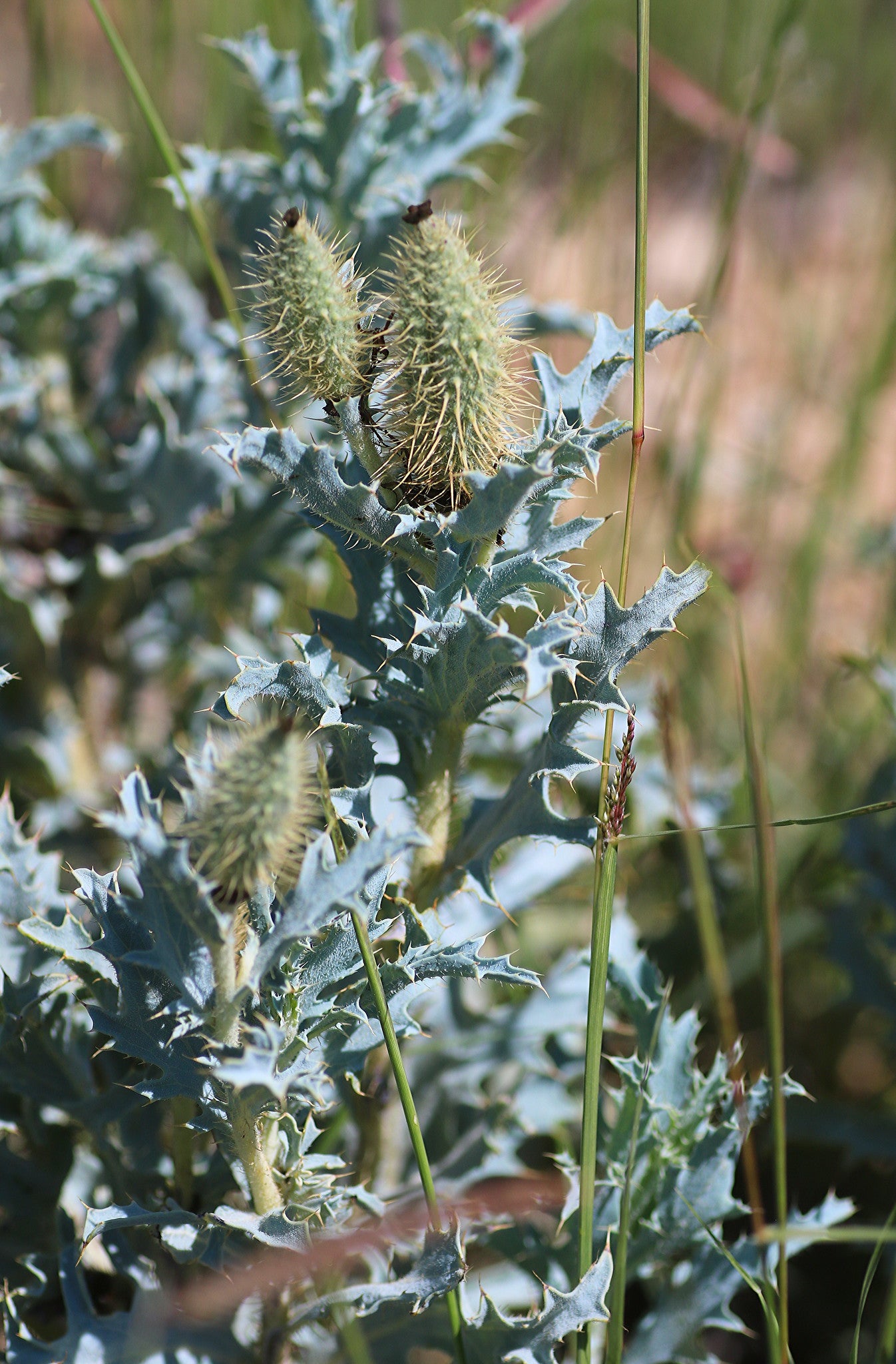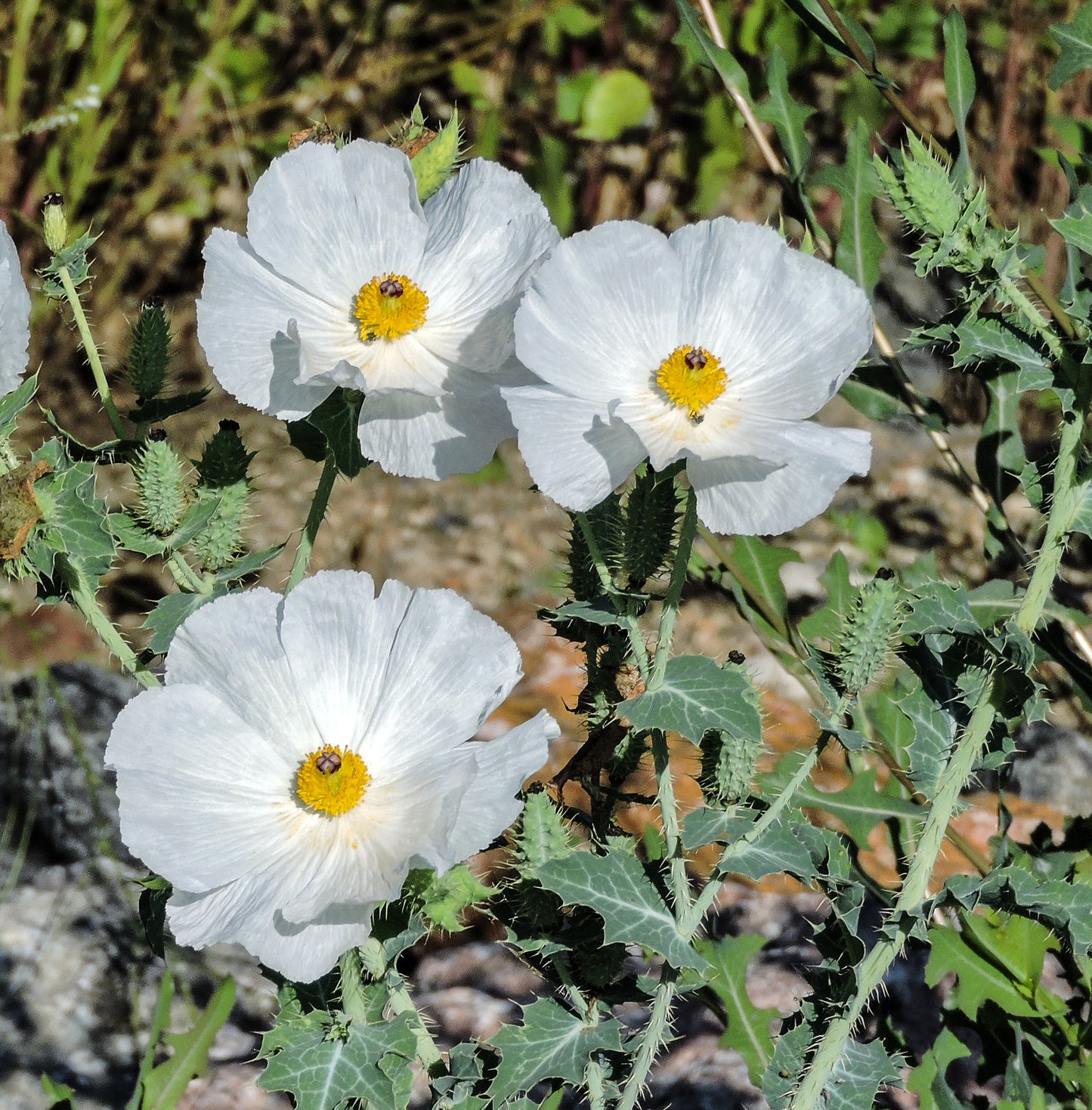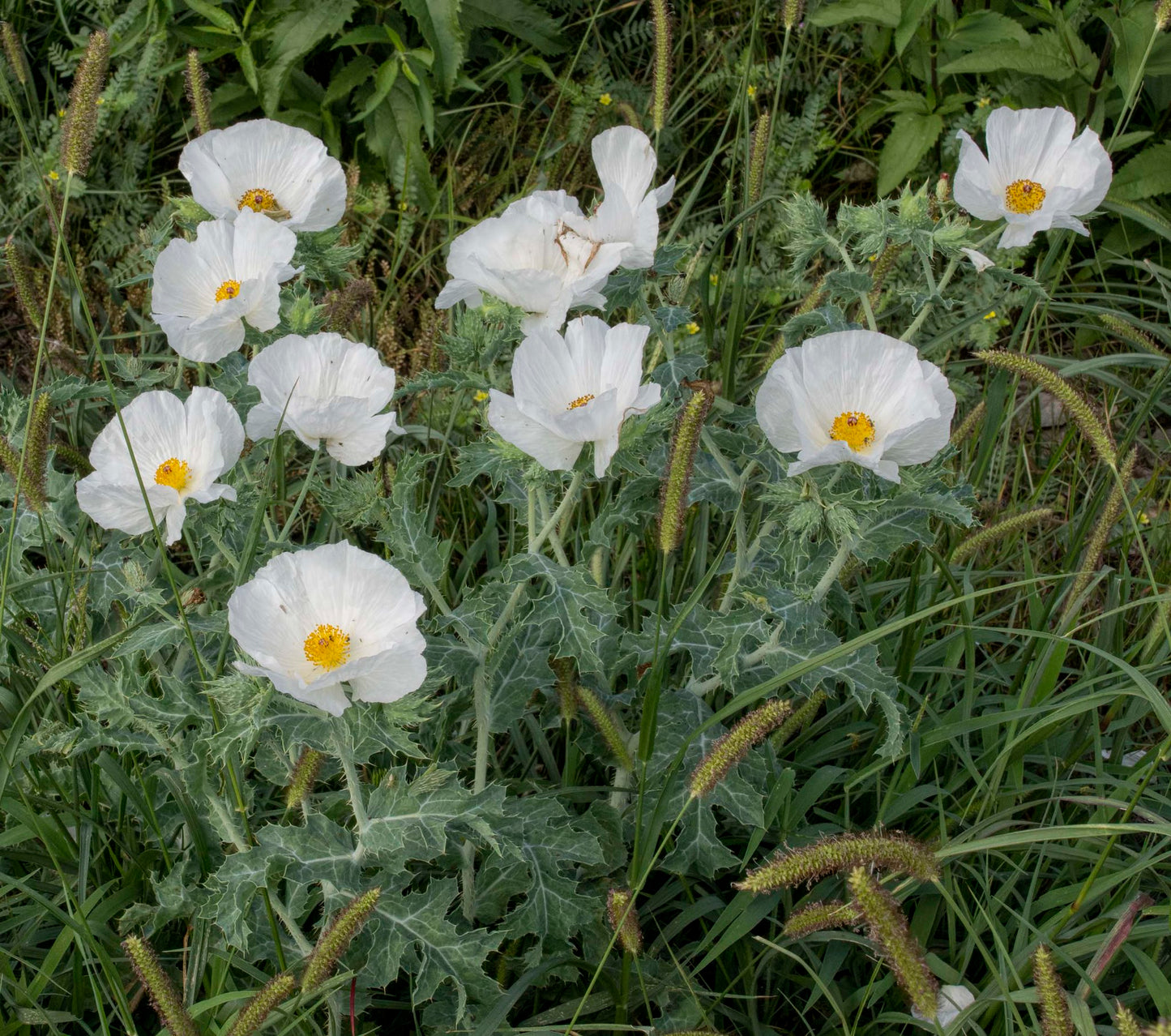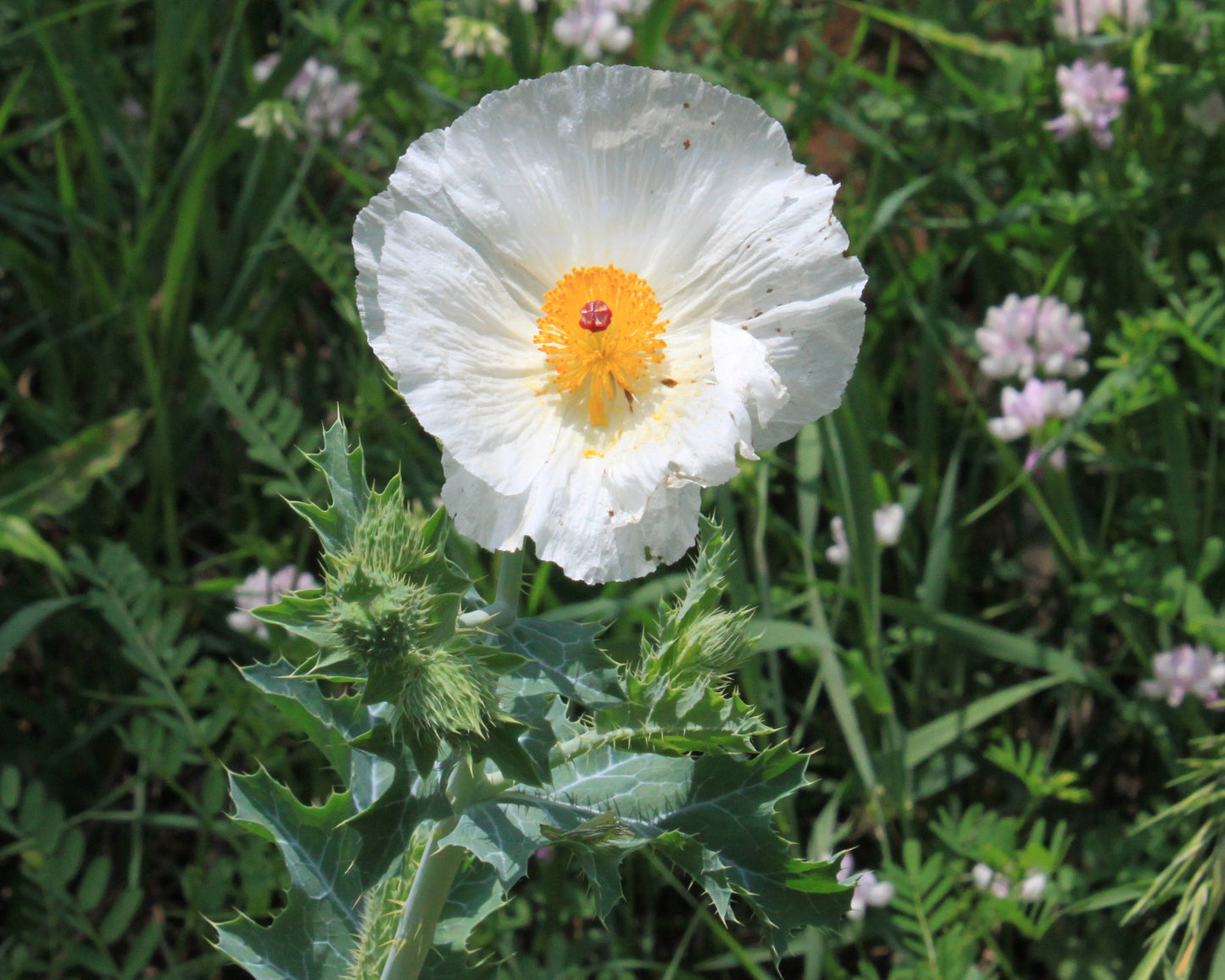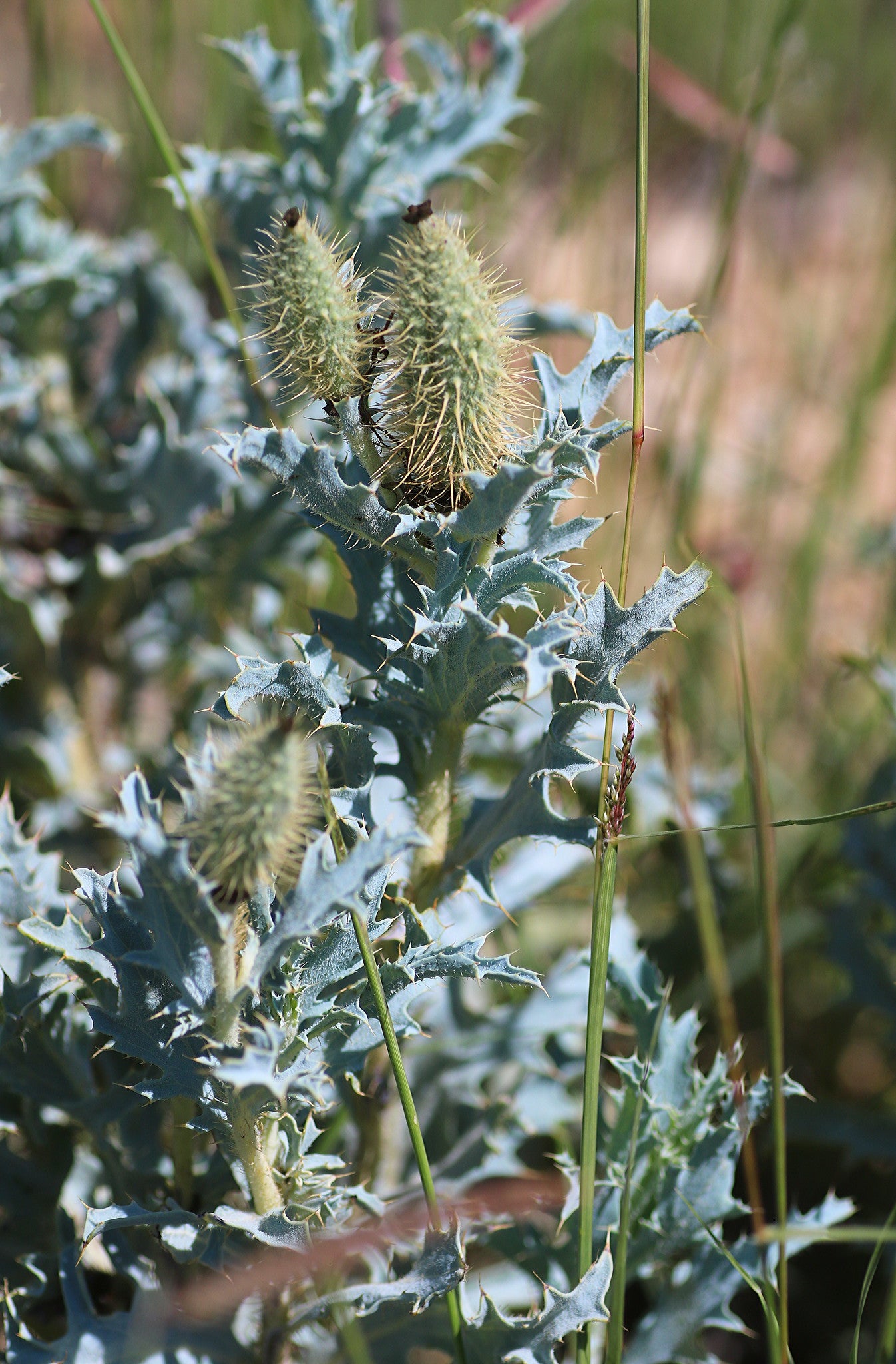Floridaseeds
Bluestem Prickly Poppy 25 Seeds Argemone polyanthemos
Bluestem Prickly Poppy 25 Seeds Argemone polyanthemos
Couldn't load pickup availability
Argemone polyanthemos, commonly known as the crested pricklypoppy or the bluestem prickly poppy, is a species of flowering plant in the Papaveraceae family. It is native to parts of North America, including the southwestern United States and northern Mexico.
Crested pricklypoppy is an annual or short-lived perennial herbaceous plant with deeply lobed, spiny leaves and stems. The plant typically grows to a height of around 30-60 centimeters (12-24 inches). Its flowers are bright yellow and bowl-shaped, with crested petals and a prominent cluster of stamens in the center. The flowers bloom from late spring to early summer and are followed by spiny seed capsules containing numerous small black seeds.
This plant is often found growing in disturbed areas, such as roadsides, fields, and waste areas, where it thrives in full sun and well-drained soil. While it can be considered a weed in some contexts, crested pricklypoppy also has ornamental value and is sometimes cultivated in gardens for its attractive flowers and foliage.
Despite its beauty, it's worth noting that all parts of the crested pricklypoppy are toxic if ingested, containing alkaloids that can cause symptoms such as nausea, vomiting, and dermatitis. Therefore, it's important to handle this plant with care and avoid ingestion.
Overall, Argemone polyanthemos is an interesting and visually striking plant that adds a touch of color and texture to natural landscapes and gardens, particularly in arid and semi-arid regions.
Growing Instructions for the White Prickly Poppy
The seeds can be sown on the ground and then watered. They will germinate in 2 weeks. 1. Prepare a mixture of half potting soil and half sand, perlite or vermiculite. Water the mixture so that it is moist but not wet. 2. Put the seeds on the soil. 3. Water the seeds. 4. Place the pots in an area with warm temperatures in full sun or part shade. 5. When the seedlings are a few inches tall, they can be transplanted.

